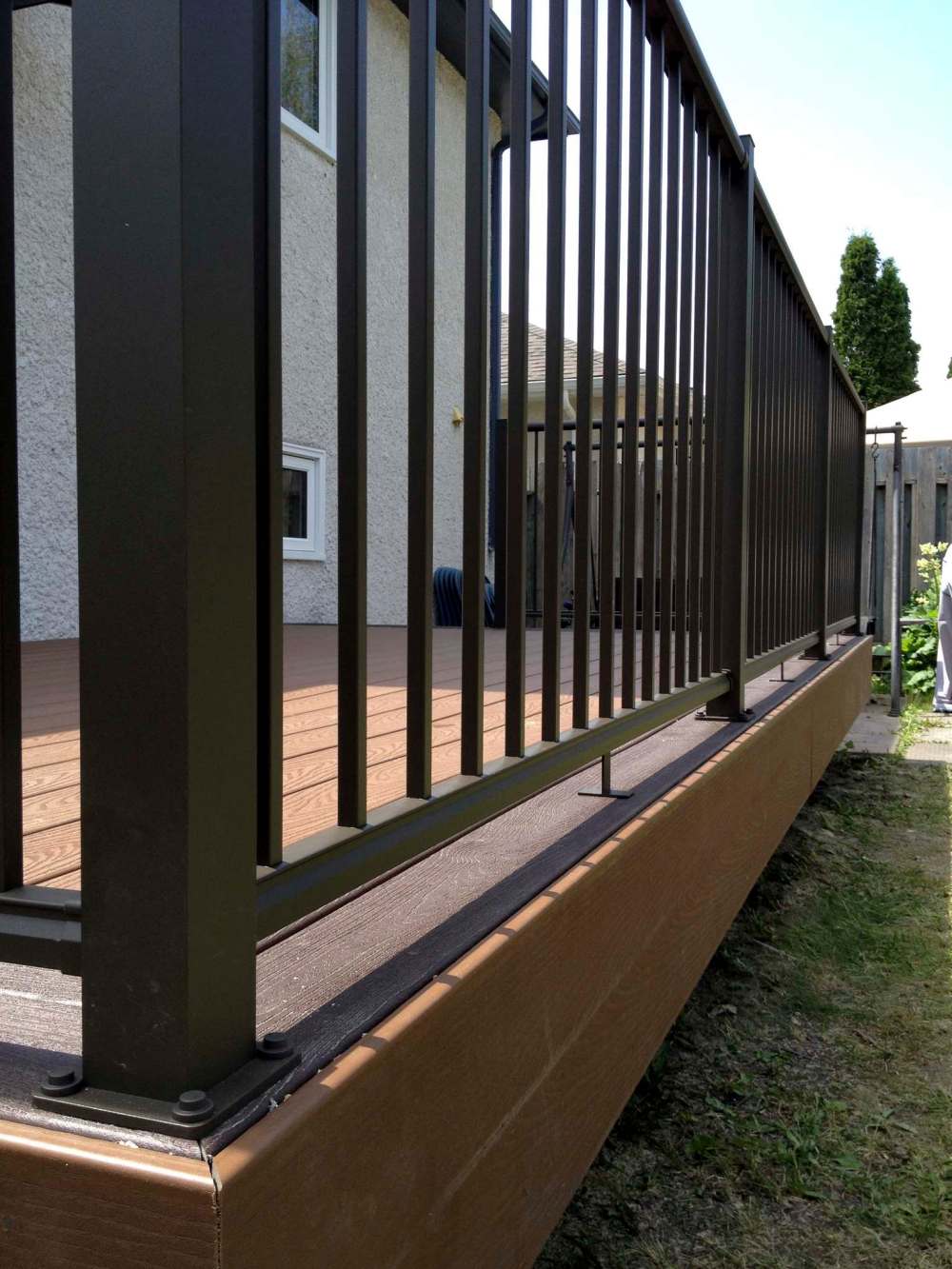Size matters with decks
Proportionality and function are key
Advertisement
Read this article for free:
or
Already have an account? Log in here »
To continue reading, please subscribe:
Monthly Digital Subscription
$0 for the first 4 weeks*
- Enjoy unlimited reading on winnipegfreepress.com
- Read the E-Edition, our digital replica newspaper
- Access News Break, our award-winning app
- Play interactive puzzles
*No charge for 4 weeks then price increases to the regular rate of $19.00 plus GST every four weeks. Offer available to new and qualified returning subscribers only. Cancel any time.
Monthly Digital Subscription
$4.75/week*
- Enjoy unlimited reading on winnipegfreepress.com
- Read the E-Edition, our digital replica newspaper
- Access News Break, our award-winning app
- Play interactive puzzles
*Billed as $19 plus GST every four weeks. Cancel any time.
To continue reading, please subscribe:
Add Free Press access to your Brandon Sun subscription for only an additional
$1 for the first 4 weeks*
*Your next subscription payment will increase by $1.00 and you will be charged $16.99 plus GST for four weeks. After four weeks, your payment will increase to $23.99 plus GST every four weeks.
Read unlimited articles for free today:
or
Already have an account? Log in here »
Hey there, time traveller!
This article was published 05/05/2018 (2743 days ago), so information in it may no longer be current.
Choosing the size of your deck is just as important as the design. When you have a smaller backyard, it makes sense that your deck’s footprint should seem proportionate, yet all the while functional.
In the early spring of 2015, Mannie Vong wanted to ready her backyard in preparation for her daughter’s graduation celebration. That included the introduction of a small, low-level deck of simple design, with access from the sliding patio door that ties into the existing ground-level patio block. The deck design called for a 10-foot by 16-foot single-tiered deck, roughly 24 inches above ground level. To avoid seasonal maintenance, Vong selected a light-brown Trex composite top decking and fascia, with an aluminum railing along its perimeter to quarantine the deck surface.
The deck can be accessed from the yard via a three-foot-wide staircase from the ground-level patio.

To begin the build process, an area below the deck was first prepped with gravel, which was graded slightly away from the house to allow for proper drainage. Because the entire deck will be topped with six-inch wide composite decking, the frame is constructed with green pressure-treated lumber (which will never be seen). A two-by-eight ledger board at 16 feet is affixed to the house, 1½-inches below the base threshold of the sliding patio door. Two, two-by-eight laminated 16-foot boards are used for the main support beam, parallel with the backside of the house, and inset roughly 16 inches from the outer edge of the deck.
This beam is set upon three short four-by-four posts, which rest atop three 12-by-12-inch concrete deck pads. Joist hangers are secured to the ledger board on 12-inch centres (required for composite top-decking).
The joists are then placed into each joist hanger along the house, secured with structural fasteners, and rest atop the beam on the outer edge of the deck’s framework. Each joist is squared and fastened to the beam.
Unlike the process of building a fully wooden deck, whereby the top decking is fastened on the outer edge and you work your way inward, I begin composite top decking along the house — I prefer to use full widths of composite and never split boards. As such, the outside end plate of the joists is only secured to the framework once the composite top decking nearly reaches the outer edge — this allows a better precision when determining the exact depth of a deck, to allow full composite board widths throughout. And, because the design requires a tandem picture-framed border of darker-brown Trex along the three exposed sides of the deck’s top surface, the gaps of the joists along the outer ends of the framework were fitted with cross sections, to support the composite top-decking that runs parallel with the joists below it.
Once the light-brown composite is in place, the joists are then cut to a length which, when the end plate was fastened to the perpendicular joists, is the exact depth of tandem composite boards which create the darker picture-framed topside border. These darker boards are mitered wherever 90-degree corners meet.

The three-foot wide staircase is also built with green-treated lumber and topped with the light-brown composite.
To complete the surface aesthetics, 12-inch-wide light-brown Trex boards are used as fascia along the vertical edges of the deck’s perimeter, mitered wherever two boards meet at a corner.
A few boards were ripped to width to finish the exposed edge of the staircase, as well ensuring that no green-treated boards of the framework are visible.
The final step is the aluminum railing.
A dark brown aluminum is chosen to match the tandem darker-brown composite top-decking used to picture-frame the outer edges of the deck surface. Because aluminum railing is top-mounted, additional wood support is added to the framework below the deck surface, at every post location, to increase rigidity.

Once the posts are fastened to the deck surface, the railing sections are then fastened at either end, to each of the respective posts.
The framework took one day to complete, the top-decking, fascia and aluminum railing another two full days, and the deck was ready for use. And, by choosing a maintenance-free composite decking solution and aluminum railings, this deck should look just as good as it did the day it was completed 10 years from now. I wish the Vongs’ many years of enjoyment!
bossenterprise@outlook.com


